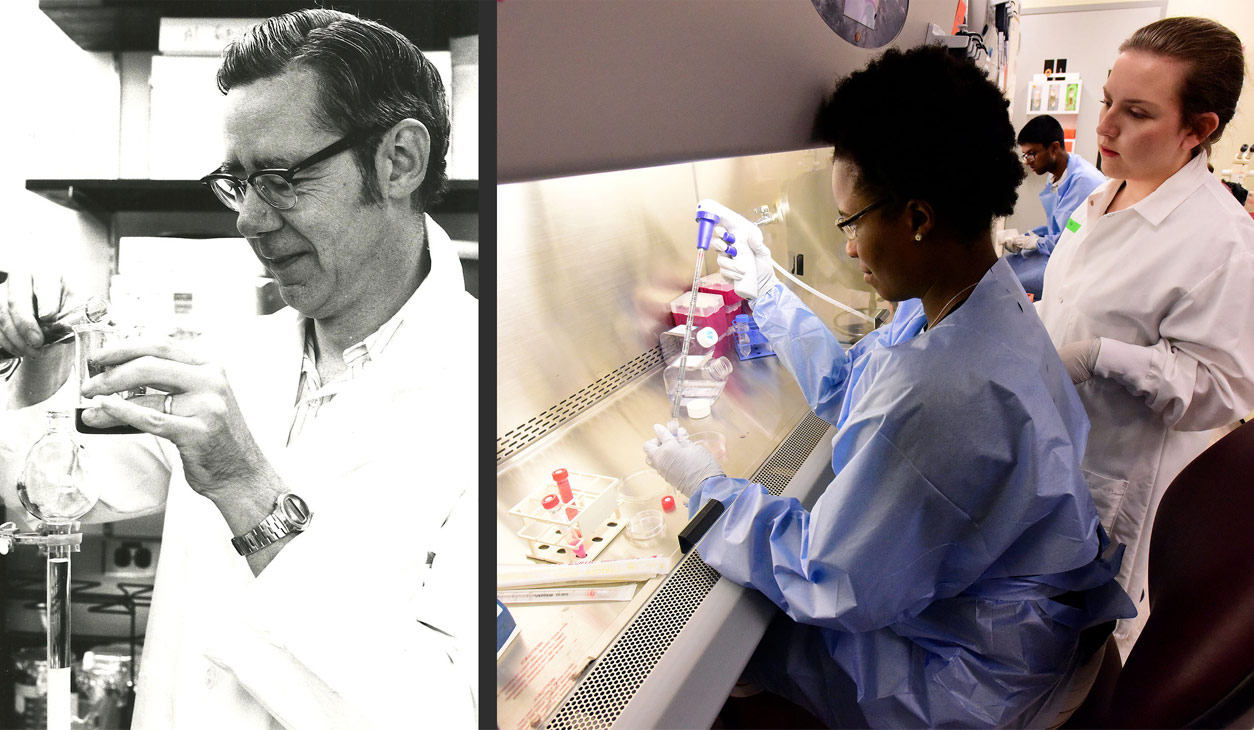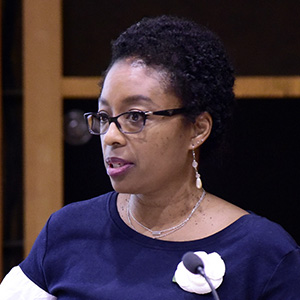Creating a safe workplace requires the active participation of all employees performing acts large and small, from the careful handling of dangerous chemicals to picking up debris in a busy corridor.
Nurturing such a culture of safety at NIEHS is one of the responsibilities of the Office of Management and its head, Executive Officer Chris Long. His passion for safety dates back to his days at the U.S. Environmental Protection Agency, where he oversaw the construction of a new campus.
The NIEHS approach
 Long directs the NIEHS Office of Management, which includes the Health and Safety Branch.
Long directs the NIEHS Office of Management, which includes the Health and Safety Branch.Long, who came to NIEHS in 2007, is proud of the institute’s record of safe operations. He points to a recent safety scorecard issued by the National Institutes of Health’s (NIH) Division of Occupational Health and Safety, on which NIEHS attained a 98 percent compliance score — second place among all 27 NIH institutes and centers.
In addition, said Long, NIEHS was far below government-wide averages on other indicators, such as reportable injuries at work. “Keep in mind those scores don’t specify whether you’re a lab or not,” Long noted. “Obviously, it’s a more hazardous environment to be working with laboratories than it is, say, an agency where everybody is in an office.”
Creating a culture of safety
How does Long think NIEHS managed to achieve this level of success?
“NIEHS has what I would call a true safety culture,” he said. “Everybody is part of it. It’s not just some other guy’s job.”
The nurturing of that culture is no accident. “We have good health and safety training when people first arrive,” said Long. “It’s the norm at NIEHS is to be safe.” That norm is furthered, he explained, by an atmosphere in which people lead by example.
“We typically do as we see the people around us doing,” Long said. “People are good about recognizing problems and dealing with them independently.”
 Safe laboratory practices have changed significantly in the more than 50 years of NIEHS research. Every researcher — even part-time undergraduates — receives training in safe practices. (Photo courtesy of NIEHS)
Safe laboratory practices have changed significantly in the more than 50 years of NIEHS research. Every researcher — even part-time undergraduates — receives training in safe practices. (Photo courtesy of NIEHS)Safety through collaboration
He said that someone from his own Health and Safety Branch once came into his office. The employee thought he’d seen Long driving and texting.
It turned out to have been a different driver. “He said, ‘I thought it would be wrong not to say something.’” Long explained. “Maybe that says something about the culture here. It doesn’t matter who you are. We’re all accountable to each other.”
Long noted that in the world of safety enforcement, most places try to keep people in line solely with rule books. At NIEHS, he has found dialogue more effective than writing tickets. “Safety has been run as a collaborative program, as opposed to an enforcement program, since before I got here,” Long said. “I think there’s a real art to that.”
In the long run, it is all about being true to the institute’s mission. “Safety and health, like environmental stewardship, are part of our mission,” Long said. “It is about protecting human health and the environment.”
(John Yewell is a contract writer for the NIEHS Office of Communications and Public Liaison.)






